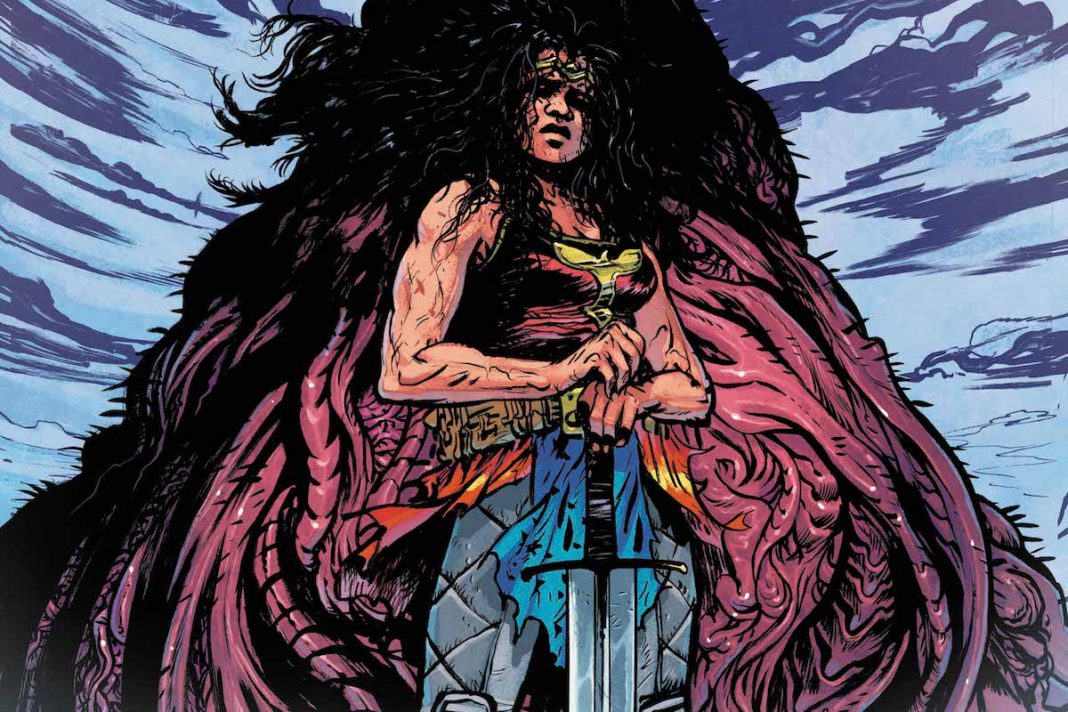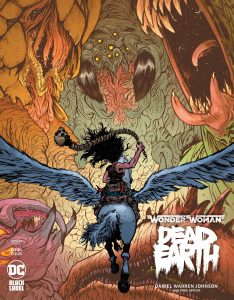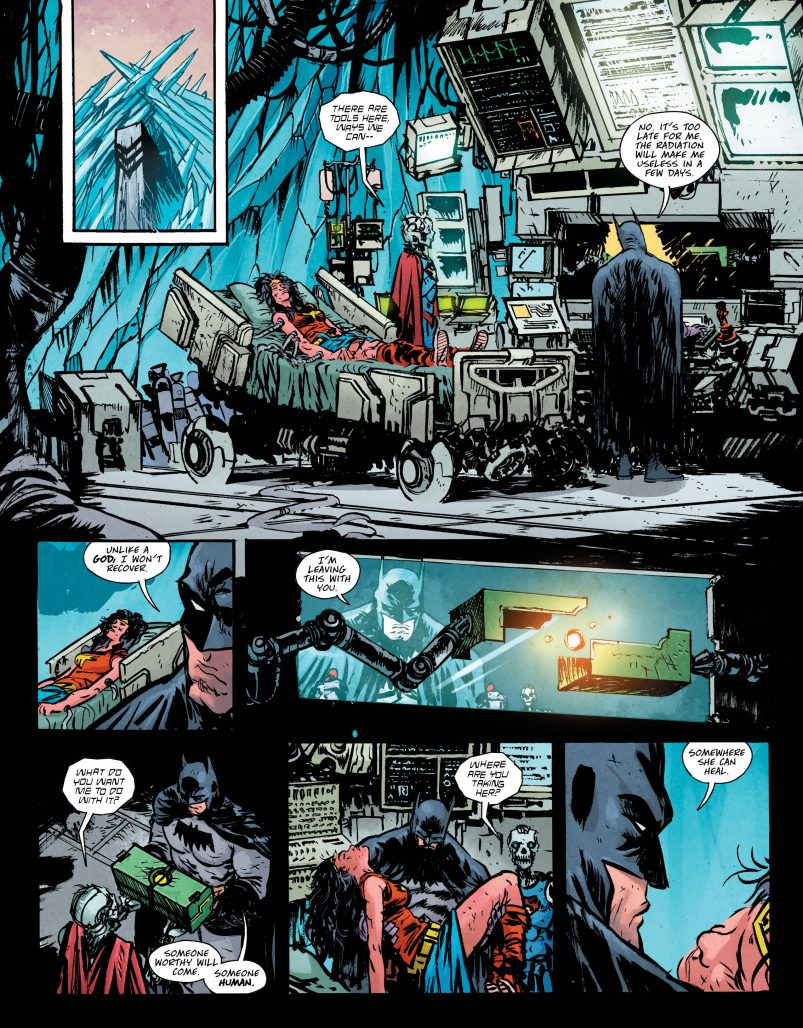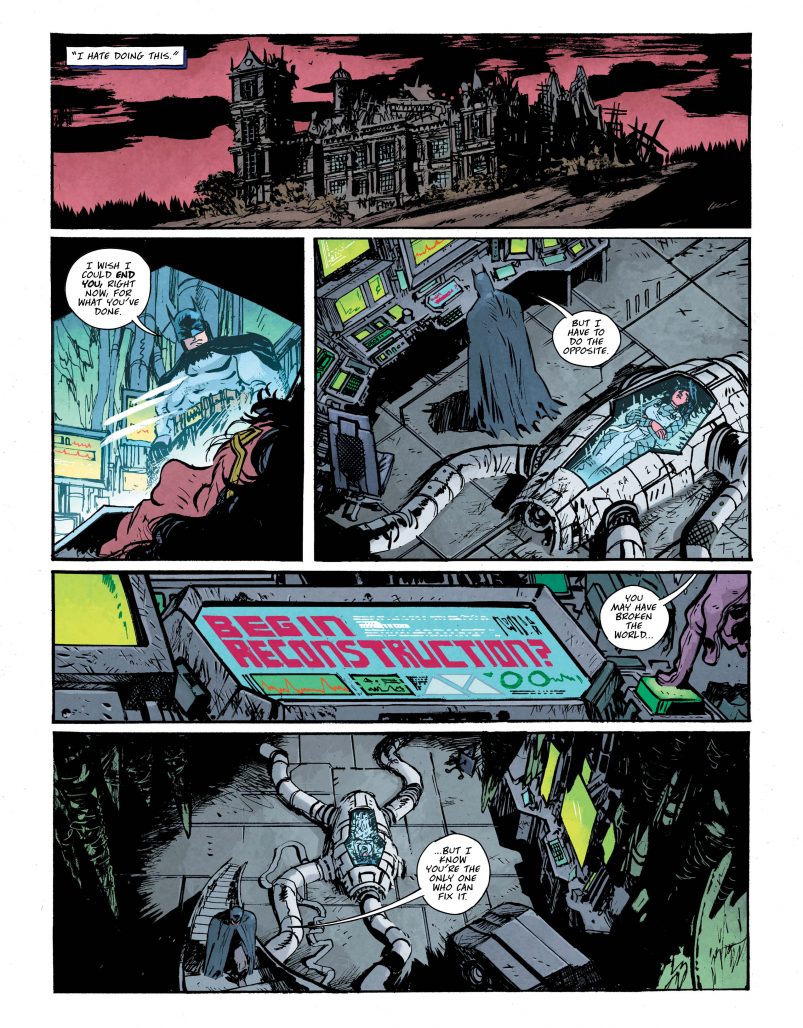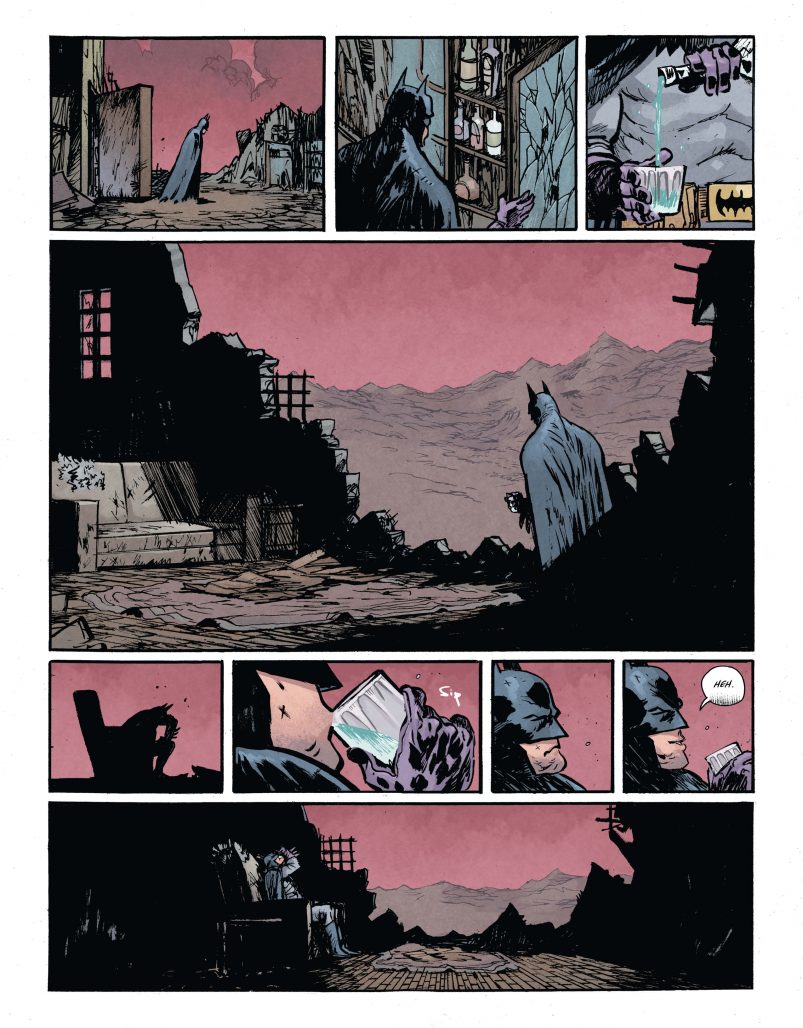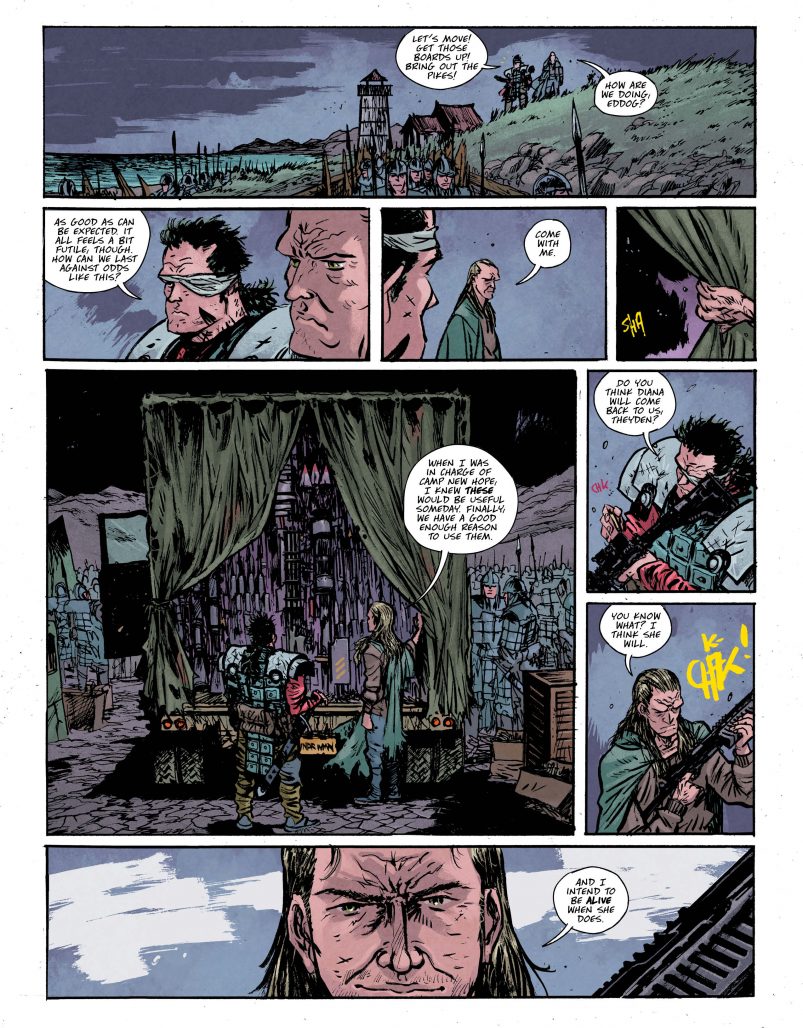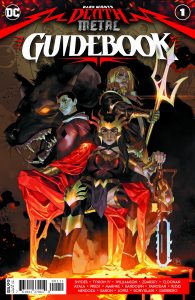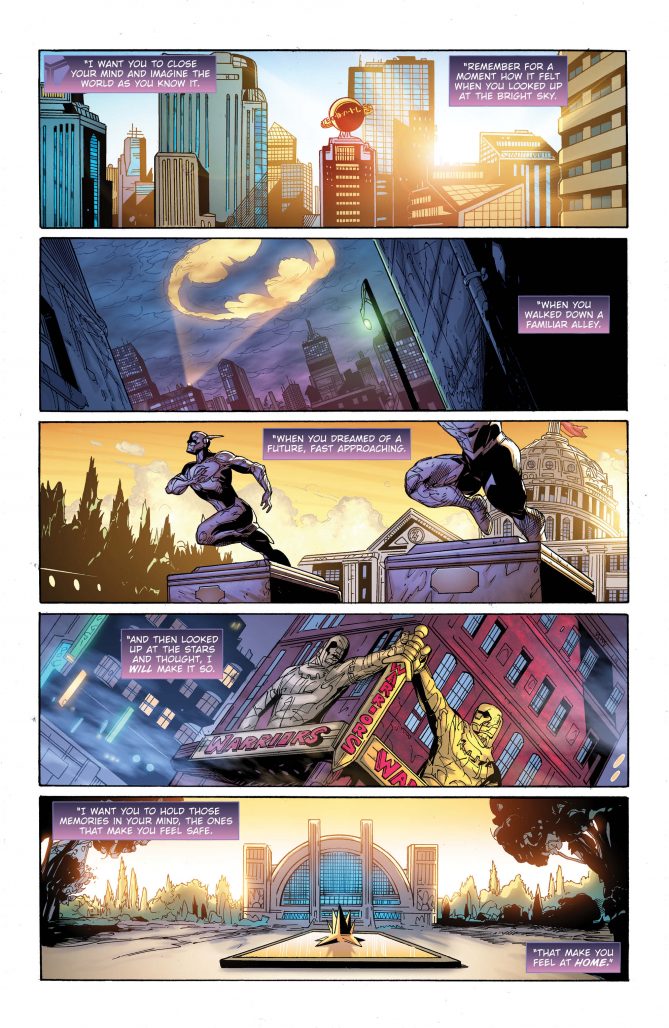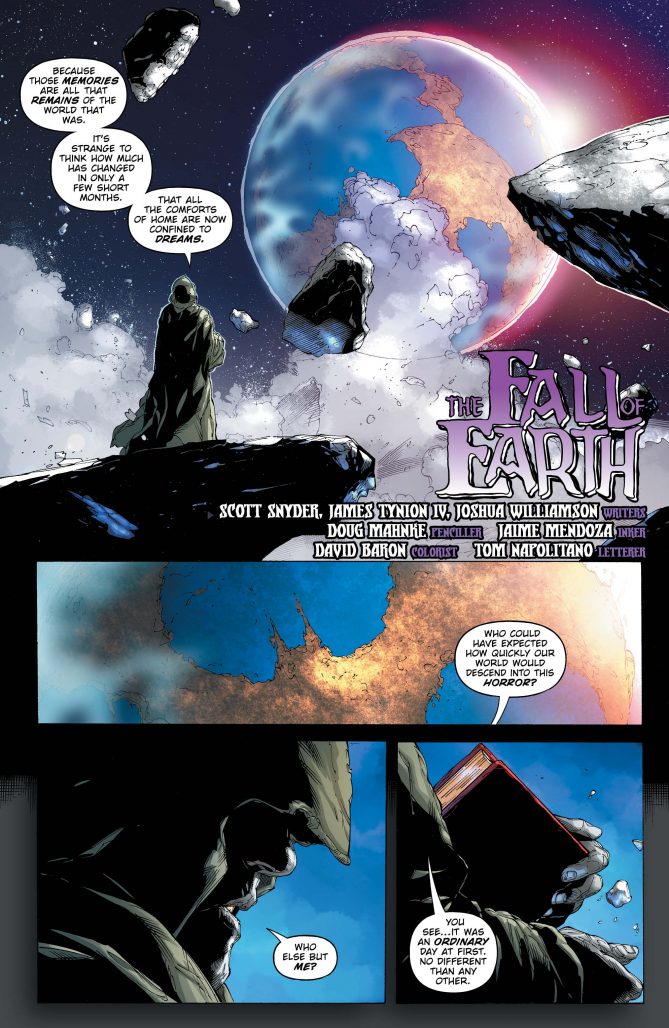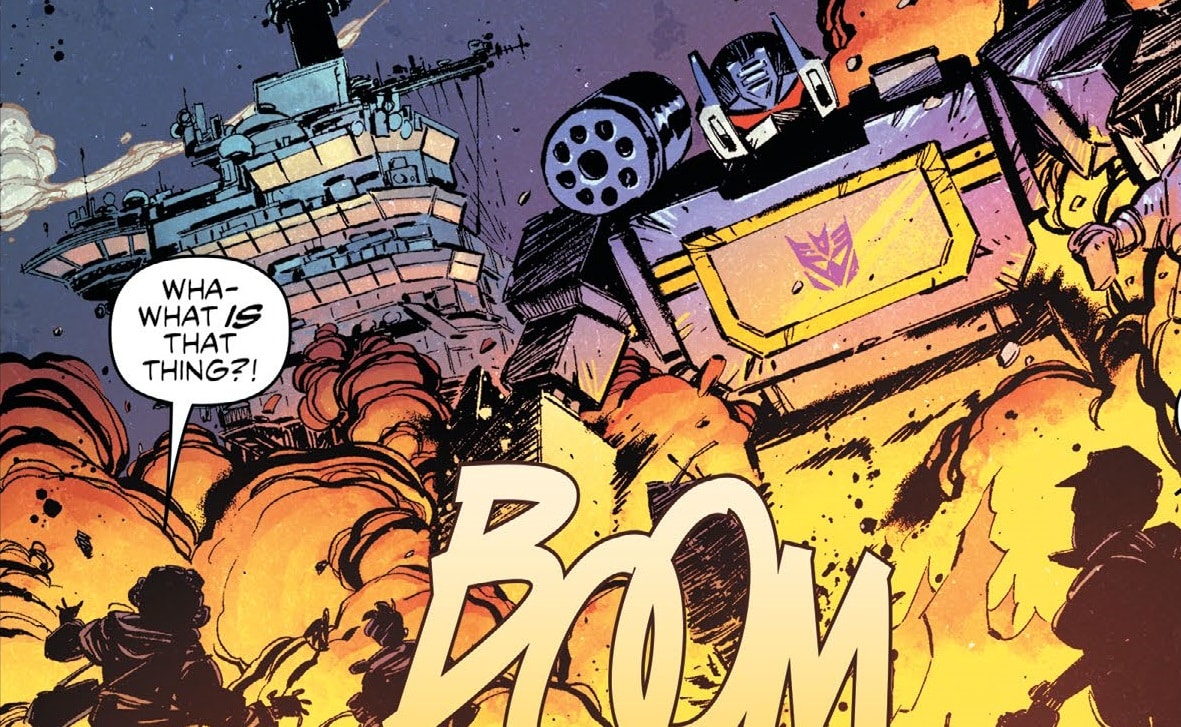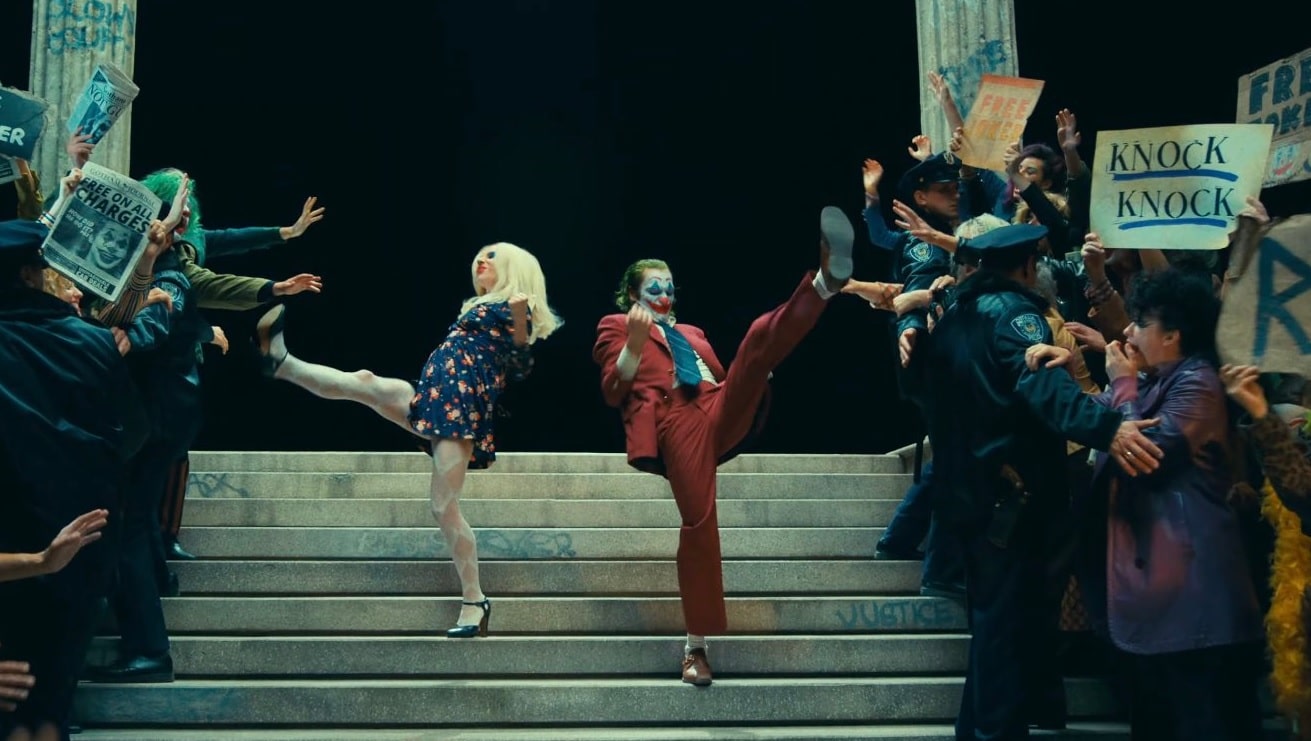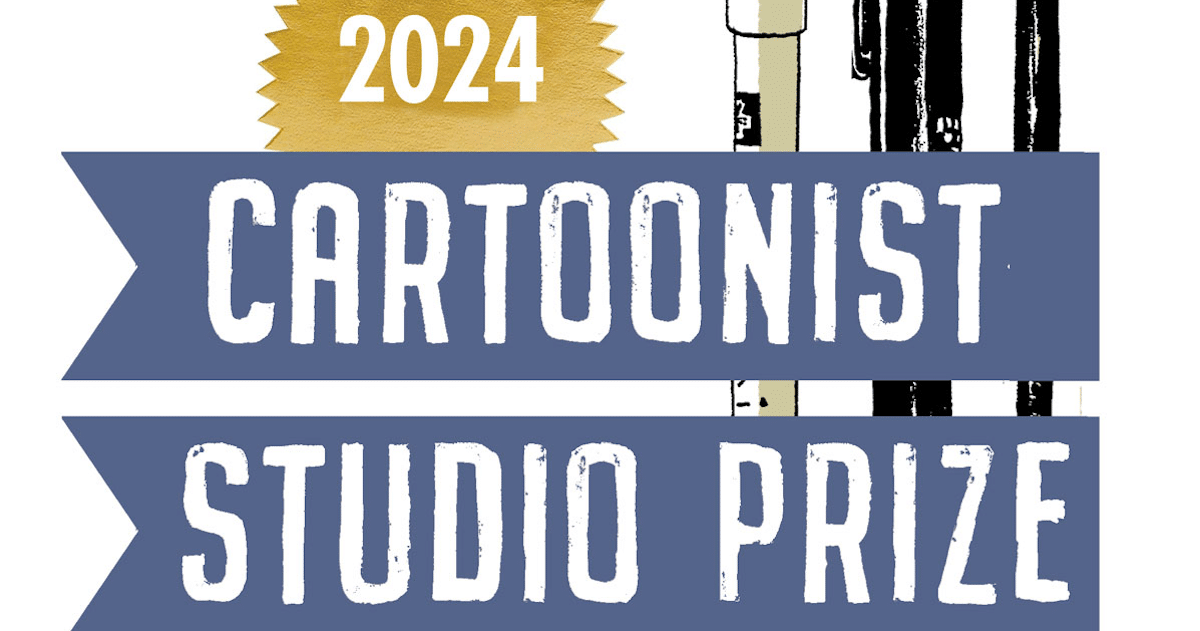THIS WEEK: Wonder Woman Dead Earth #4 concludes a bombastic miniseries from writer/artist Daniel Warren Johnson, that for the first time has given Diana Prince an ending to years of adventures and stories.
 Wonder Woman Dead Earth #4
Wonder Woman Dead Earth #4
Writer/Artist: Daniel Warren Johnson
Colorist: Mike Spicer
Letterer: Rus Wooton
Last week was a tumultuous one for fans of DC Comics, at least in the online spaces that I frequent. Early in the week, mass layoffs swept through DC’s parent company, WarnerMedia, and as a result, quite a bit of DC Comics’ senior editorial leadership has now been laid off. Or rather, they soon will be. They weren’t pushed out on the day the news broke, with departure dates instead seemingly set for the months to come, but the advent was enough to send roiling waves of panic through significant parts of DC fandom. When the publisher’s November solicits dropped a few days later, several titles were labeled FINAL ISSUE, fueling said panic even further.
So yeah, in the months to come many of the folks who have shaped DC Comics as we’ve known them in recent years will be exiting the company, while a significant chunk of the monthly publishing line will conclude, with news not yet made public about what (if anything) will come next. As a result, I came into this week’s books with an odd sense that something was ending, and I think that’s a fair assessment of what’s happened at DC of late. It’s difficult to speculate as to what comes next, yet it will almost certainly be different from what we’re used to, both in the scope of what they’re trying to accomplish as a publisher as well as the audience and distribution channels they’re working to target. With all that in mind, it is perhaps fitting that the best DC book out this week is also the story of an ending.
That book is Wonder Woman Dead Earth #4, from writer/artist Daniel Warren Johnson, colorist Mike Spicer, and letterer Rus Wooton. This issue is essentially an ending for a miniseries that itself has sought to give Wonder Woman an epic and grandiose ending, a conclusion that wraps up the many adventures and the deep ethos that have swirled around the character for 80 years and counting. It is the story of Wonder Woman at the end of mankind. Through the course of the past three issues, we’ve now learned that nuclear war destroyed the world as we know it, and amid this apocalypse, Wonder Woman lost the deep faith that she long held in humanity’s inherent goodness. Johnson has painted Wonder Woman as an empathetic caretaker for us humans, a benevolent force who wants to bring the best out of us…but lost that faith in a moment of testing and weakness.
On the surface, the central conflict of the book is that Wonder Woman awakens deep into a ruined future, and she must now protect the few humans who have survived from threats like gigantic beasts and mutants. That’s a great plot, made especially remarkable by Johnson’s phenomenal giant monster artwork. But that’s only the surface conflict. The actual drama of this story is beneath, with Wonder Woman wrestling with herself to regain faith not only in humans, but in her own ability to support and protect them, to maintain her deep wells of empathy and optimism. It’s all a very Wonder Woman story, one that gets at the core tenants of a beloved character.
And it occurred to me while reading this ending issue that this is perhaps the first time we’ve gotten those tenants played out in the context of an ending, which is a storyline that DC’s other most prominent characters seem to get all the time (The Dark Knight Returns, The Death of Superman, etc.). Wonder Woman’s status as an immortal figure of mythology has long made it difficult to give her an ending, because she will inherently live forever. What this series does, however, is give an ending to her life’s work — humanity. It’s through this that we get to see her legacy, her impact on the world, and the concluding strokes of her story arc.
As always with these things, it remains to be seen whether this story will become a prevailing ending myth for Wonder Woman, as the aforementioned works have for Batman and Superman. Whether that happens will be decided by how much readers and fans take to this comic, whether they continue to buy it, thereby keeping it in print. It’s a great story, though, so if quality is any indication, I think we can all expect this book to go down as a classic, as the premiere imagining of the end of one of DC Comics signature characters and stories.
Verdict: Buy
 Dark Nights – Death Metal Guidebook #1
Dark Nights – Death Metal Guidebook #1
Writers: Scott Snyder, James Tynion IV, Joshua Williamson, Chip Zdarsky, Becky Cloonan, Vita Ayala, and Priest
Artists: Doug Mahnke, Jaime Mendoza, Khary Randolph, Becky Cloonan, Dan Panosian, and Eduardo Risso
Colorists: David Baron, Emilio Lopez, Tamra Bonvillain, and Luis Guerrero
Letterers: Tom Napolitano, Dave Sharpe, Steve Wands, Ferran Delgado, and Willie Schubert
While I continue to wonder whether I really like Dark Nights: Death Metal as an event (which is standard for me halfway into these giant event stories), I’m starting to enjoy more of the supplementary material being released around it. I thought the evil baby Batman story in the Legends of the Dark Knights comic was brilliant, one of the most clever vignettes in the long history of the publisher. This week, I also thought the Dark Nights – Death Metal Guidebook was well done.
As a wise friend of mine once said, if you’re going to do a big event, you ought to also do a guidebook. It’s a fun touch, one that when done right lends these giant stories a sense of orientation, a 20,000-foot view, so to speak. That’s certainly what this comic does, and often in a really entertaining way. For better or worse, Dark Nights: Death Metal #1 opens with a bit of disorientation. The start of this event essentially throws readers into a new status quo, one that has been shaped by a series of cataclysmic events between the hazy end of writer Scott Snyder’s run on Justice League (our heroes literally run toward a bright light and mysterious door) and the start of this story.
Many of the heroes themselves in that first issue don’t remember exactly how they got where they are. We slowly learn that the world is under the control of The Batman Who Laughs, and that he has basically broken and deputized members of the league to act on his behalf, with dark alternate universe batmen overseeing them as the world’s worst middle managers. Aquaman, for example, is guarding the seas under the watchful eyes of a Cthulhu Batman, Superman is powering the sun via some hellacious cosmic peloton as a Darkseid Batman manages him, etc.
What this comic does is fill in more of the backstory of how these heroes were broken and put in these roles. That’s a fine concept, and it’s made even better by many of the creators tasked with executing the details. Most of these stories are very solid, but there were two that stuck out to me as favorites — Harley Quinn in Queen of the Desert by Chip Zdarsky and Khary Randolph, and Wonder Woman in Seeds of Hope by Vita Ayala and Dan Panosian. I also liked the main, opening story quite a bit. The two other vignettes I just named were more surprising, giving creators who haven’t done as much with DC in recent years a crack at the world and the characters, with great results.
Verdict: Buy
Miss any of our earlier reviews? Check out our full archive!


